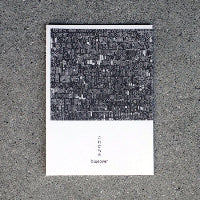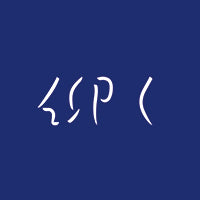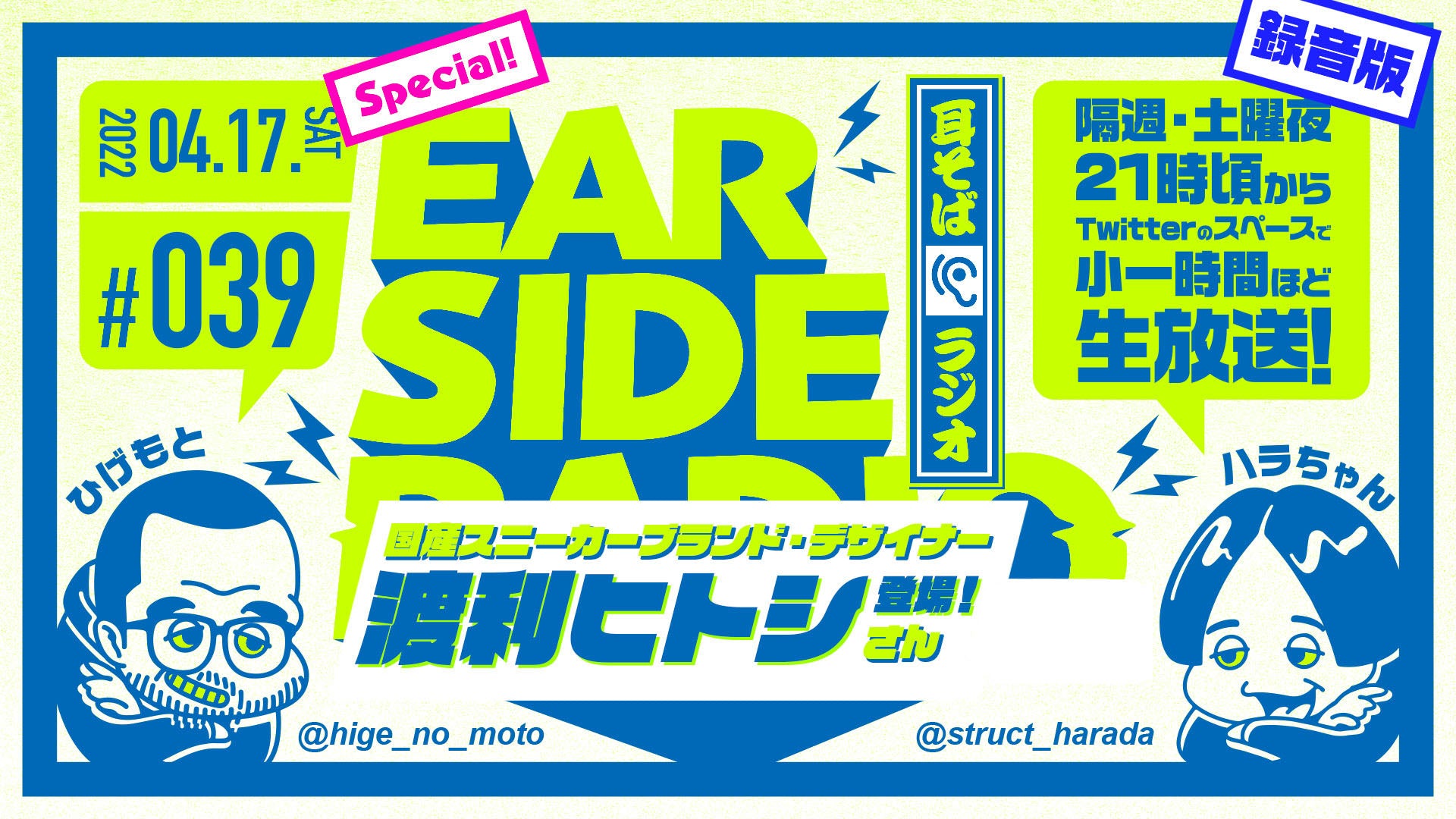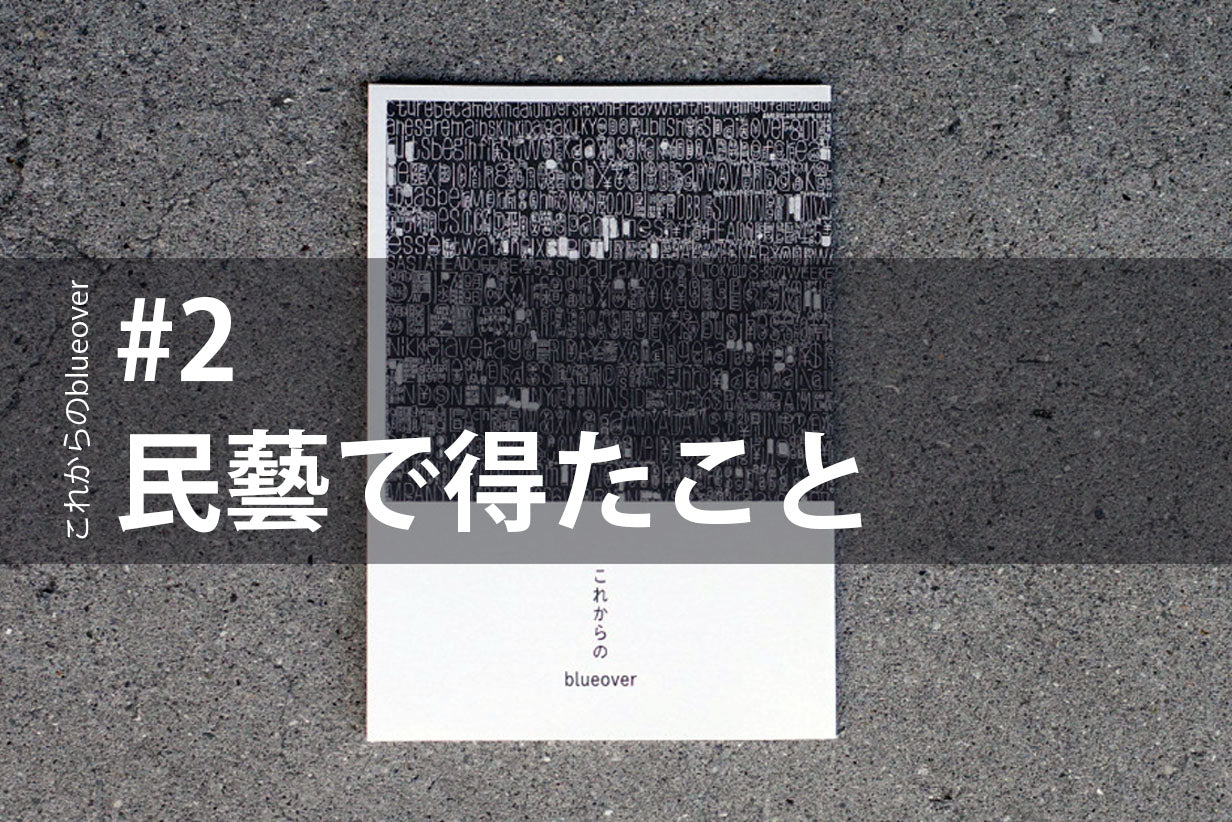Future blueover #01 | Domestic production
Text: Hitoshi Watari (blueover designer)
Introduction
This article was originally written in a note on the web media in order to summarize my thoughts, but on the occasion of the 11th anniversary, I decided to turn it into a booklet. Therefore, the comments that appear in the text are just for organizing my thoughts, and I am not writing them with the intention of having anyone read them, so please understand that some points may be difficult to understand. Also, please note that this is not based on academic or evidence-based information, but rather is highly subjective based on personal experience. (June 3, 2022)
postscript:
We have decided to serialize this booklet on our website because we want people to read it during their leisurely time at the end of the year. After writing this, I've been learning a little bit about business succession issues, art, and welfare, and I've been trying to combine this with blueover's activities, but things aren't going as planned. However, I think I will be able to tell you about some new challenges for blueover next year.
While the world situation and society are unstable, we would like to do what we believe in, what we want to convey, and what we can do little by little. Our business is to make shoes and have people wear them, but we also want to provide value to those who wear them that goes beyond just ``wearing shoes''. I hope that the value of this will create a positive situation for society in the future, and that by wearing blueover, I will be able to take a new step forward for myself.
Although things may not go well, I believe that there is meaning in continuing without giving up, and I will keep going again next year. (December 11, 2022)
What I'm thinking now
There are many unstable elements and issues that need to be resolved in the world today. However, as an organization, we must think about what we can and should do to address these issues, and then take action. I think this is the first important thing.
I originally worked as a product designer, working with companies to plan and design products. Then, 15 years ago (2006), I became independent, and 11 years ago (2011) I created a sneaker brand called Blue Over. Now, he runs a corporation called Baton and develops multiple brands. The company has a small number of employees and sales are small, but we want to make it a company where we can do what we want to do and what we think is good.
So, regarding what I'm going to write about from now on, I'm going to write about what I envision the brand to be like at this point in time. In particular, I would like to write about Blue Over, whose design inspired Monouri 10 years ago.
First of all, I have to give a brief explanation about Blue Over , but since that would be long, I would like you to read it from here (as a concept, it is quite long).
Now, as I wrote at the beginning, the world is currently very unstable all over the world. We are experiencing unprecedented difficulties domestically. There are many issues that need to be resolved. Despite this, Blue Over was able to continue receiving support from customers. During this time, we had many detailed discussions with colleagues at the company about the brand, its production system, and its future plans.
As has been said elsewhere, the world is truly overflowing with things. The days when products could be sold simply by putting them in a store are long gone, and we now have to come up with various ideas to sell them. Still, it's difficult to get people to buy it. People's consumption behavior has truly changed dramatically, and I feel that the era of mass production and mass consumption of goods is coming to an end.
Domestic production
Blue Over continues to focus on domestic production, with one of its objectives being to continue domestic production. That attitude still remains the same. However, over the past 10 years that we have been running this brand, we have actually visited and seen manufacturing sites, and it is true that the scenery we see is different from when the brand was first established.
We at Blueover are a very small brand. Small brands like ours, with little capital, need to create a sustainable system even if the scale is small.
Normally, when production is requested from a factory, there are always production conditions, and the minimum number of production units and the price per unit are presented.
If you don't accept these conditions first, you won't even be able to create anything. In the past, this number was large and the conditions were quite difficult for a small brand like ours to tackle, but in recent years, various factories have been downsizing, and the hurdles for production conditions have been lowered accordingly. This current situation is convenient for us, but it means that the market size for the industry will decline. This is not a question of which is better, but situations like this do happen.
And most of the craftsmen working in the manufacturing industry around us are over 65 years old. This means that rejuvenation of the organization is not going well, but it is also linked to the fact that fewer jobs are being created for young people due to lower wages.
Although we would like to continue to focus on domestic production, we are also aware that we cannot continue with our thoughts alone. It is clear that we need to break away from the shoe industry's current business model.
Under these circumstances, we have begun to see new movements among young people. I recently came across Setouchi Leather , a tannery (factory that tans leather).
This tannery was started by Mr. Inoue and Mr. Enami, who are almost 30 years old, and in the 10 years since they started the brand, it was the first time I had heard of such young people starting a tannery, and I was surprised. there were.
young tanner. That alone is unusual, but the transaction format of Setouchi Leather is also a little different. Ordinary consumers do not often deal directly with tanners; instead, there are intermediaries called leather wholesalers, and they often do business with them. The reason for this is that general consumers want to purchase even just a single piece of leather, but tanneries generally do not sell leather in single pieces, and can only trade in orders of at least 10 pieces. As a result, leather wholesalers have inventory, and consumers can purchase even just a single piece. Since tanners do not keep inventory, they purchase the products completely at the tanning stage. In other words, it is highly specialized for general consumers to do business with tanners, and even if the leather is not finished as desired, they have to buy leather starting from 10 pieces.
For these reasons, it is difficult for tanners to appear on stage. However, Setouchi Leather has been given a retail function, connecting directly with end users and at the same time creating a clear price list for consumer orders. In other words, we have reduced opacity by presenting an easy-to-understand pricing structure to end users. Such a business model did not exist in the industry. As the tannery was started by a young person with no previous constraints, it feels like a new type of leather industry that is not found in long-established stores. Although these efforts are small, they are starting to sprout little by little in various places.
Against this background, we believe that our position is to continue placing orders domestically, even in small quantities, as long as local factories continue to operate, and to create a sustainable production system that is different from the traditional shoe industry. I think we should look at new production methods such as WHOLEGARMENT and 3D printing. The other option is to find a form of employment that maintains the traditional machine-made (sewing by hand using a sewing machine) method. Production methods based on technological innovations such as WHOLEGARMENT are methods that can be considered on the premise of reducing both environmental costs and human costs, so we would like to actively adopt them when the situation arises.
However, machine-made products using sewing machines always require human hands. However, the number of seamstresses in the garment industry is rapidly decreasing due to the aging population and declining wages. Looking only at sewing, there is sewing for bags and clothes, but as an industry, even for the same sewing, the skills and types of machines are different, so it is not easy to make requests. This is impossible based on experience.
The production system, which is generally referred to as a wholesaler-based cottage industry in the production area, is based on orders from the wholesaler (in this case, the company that owns the brand), and there is a body that coordinates the area, and from there it is sent to the sewing factory. The system is to allocate and sort them out. A sewing factory may be a small factory operated by multiple people, or it may be a single house.
In the case of sewing at home, a sewing machine with a body suitable for sewing shoes is installed, the skills are taught, and the job is commissioned. This kind of economic cycle used to occur, but now the number of orders has decreased due to the recession. There are no longer organized sewing factories, and there are many individual sewing factories such as detached houses. However, as the population ages, it is safe to say that the end of the wholesaler-based cottage industry cannot be denied.
Breaking away from past business models and creating and maintaining new systems. From the factory's perspective, young people like the aforementioned ``Setouchi Leather'' may start new businesses and create garment businesses with a different business model than before. In addition, an increasing number of factories are launching brands and selling products directly to end users through crowdfunding, their own e-commerce, and platforms called malls such as Rakuten and Yahoo.
What our company can do for the garment industry is to create human resources with multiple skills, such as those who can do sewing and marketing, and have them function within the company. A type that combines other job skills in a way that compensates for the disadvantage of low wages in the manufacturing industry.
Another option is to become the leader and introduce machines to employment support facilities and provide technical guidance, creating a production system different from that of the past. I know it's not easy either way. To be honest, when looking at business efficiency, I think we should use a production method that relies on technological innovation rather than machine-made products using sewing machines. I don't think it's a good idea, but I personally find the charm of stitchwork using a sewing machine, and I think it's a technical asset that I want to pass on, so I'd like you to see it even if you're dumbfounded.




